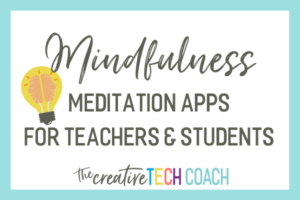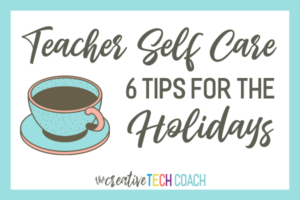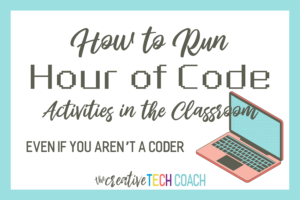I’ve had some thoughts percolating since SC EdTech at the beginning of November. I attended some great sessions, and there were so many great things I learned that I want to share. Over Thanksgiving break I reviewed my notes and some ideas began to take shape. (It took until Christmas break to finish this post, though!) One common theme that arose in a few sessions was inquiry-based learning, which I was super excited to learn more about. Additionally, an often-mentioned resource at SC EdTech was Padlet.
Anyone who knows me knows I love Padlet. Padlet has been a favorite of mine since last year when I started using it regularly in my classroom. If you aren’t already familiar with Padlet, I strongly suggest you check it out. (To find out the many ways I’ve used Padlet, check out my posts 6 Ways to Use Padlet in the Classroom: Parts One and Two.)
So of all the things I learned and want to try out here are three ideas that I want to share right now:
-
Last year, I had an idea that I was really excited about, but never got off the ground: using Padlet for Wonder Walls. The idea came from a suggestion for creating a sense of wonder in our classrooms. The main purpose of the Wonder Wall was to collect questions that arise during the course of a unit, that may or may not be pertinent to that day’s lesson, but that we may not can pursue at that moment. Students would post those questions–the questions that are important to them– at the time they arise, and then come back to answer them during independent work time. Students can use that time to research the answer to the question and post the answer and possibly a link back to the source.
Two of the sessions resparked my aim to start a Wonder Wall. The first was a session on inquiry-based learning, and the presenters suggested using Wonderopolis for Wonders of the Week. I immediately made a connection to my Wonder Wall, where students could post a wondering and the class could use the week to find the answer. Another session on Genius Hour suggested allowing students to create questions they want to answer and give them time each week to research. Again, I thought of Padlet as the perfect platform to post the questions so that everyone can see and students can comment on each other’s questions (see #3 below).My goal for next year is to start a Wonder Wall–for real this time!–and provide students time within the week to research their wonders. I’m still working out exactly how I want to implement this in my classroom, but will let you know when we’ve got it up and running!
-
Padlet was also featured in an amazing session about reinventing the reading log. The presenter, Dawn Mitchell @dawnjmitchell, did a great job and gave an amazing presentation using TES Teach with Blendspace. She provided some amazing ideas about using Padlet for reading logs in a variety of ways, including having students share what they are reading, creating trailers to inspire others to read a book, reflecting on reading strategies, demonstrating comprehension by answering a question using text evidence, or taking “shelfies,” where students take a picture with their books and tell what they are reading now and what they will be reading next. For some of the activities she suggested, students would post on a Padlet the teacher created, but for others each student had their own account (the url was shared with parents). Sometimes students would not only share what they read each night, but maybe even take a picture with who they were reading with. Ms. Mitchell said she was amazed by the level of family engagement created by using digital reading logs. However it’s used, the major purpose is to use Padlet to get students to go deeper than a traditional reading log and compel them to be voracious readers. Here’s the Padlet that Ms. Mitchell shared for the SC EdTech attendees to post:
-
The most exciting new thing about Padlet, though, is now you have the ability to comment on posts! This is not something that I learned at SC EdTech, but something I wanted to address since it seems to be such a popular learning tool. In both of my posts about Padlet, I mention how I use it for my class’s Morning Message. I have recently taken it a step further and have had students comment on their peers’ posts. We are still working on what to say in a comment to another student’s work and I should have had a minilesson on it first, but so far the students are doing well posting comments that are positive and encouraging, but more than just “Good Job!”
So now I have a few more reasons for loving Padlet! I encourage you to try using Padlet today in your classroom and share in the comments what you did!



